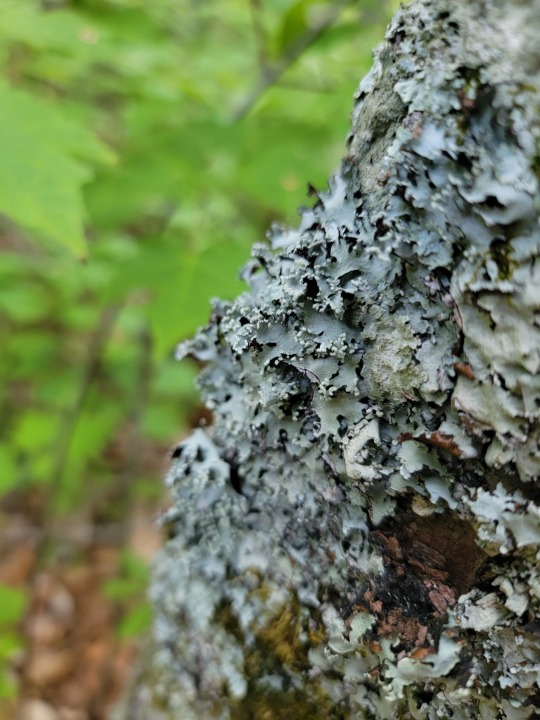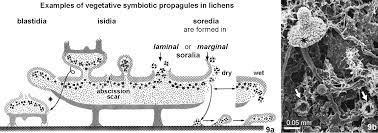#asexual propigation
Photo


The large and glorious, Parmotrema reticulatum,
Common macro lichen in the ruffle lichen group, common on acidic barks in areas with humidity year round, though can be found despite this niche specific commonality in less humid areas at lower frequency of occurrence.
Soredia/ Soredium, here we see this structure on black sheet lichen at the terminal section of the lobed thallus, It’s interesting because this is a unique type of compartmentalized viviparity that many lichen undergo to create more of it’s self, asexually propagate.
These globules are similar to isidia in the regard that they are asexual in method and break off; however these are fungal hyphae wrapping up the photobiont as a fragmentation package externally forming from openings escaping outward at terminals or as groupings in an open section and are globular, where as isidia are columner or clubshaped, much smaller, and often begin formation enclosed fully in the lichen before being broken off. True to this, it’s actually said that if comparing asexual structures, cephalodium are actually more similar to isidium in conception do to being encapsulated then emerging like a wart or gall; with that said isidium are non discretionary to photobiont and fragment like soredium, where as the cephalodium is descrete to cyanobacterial photobionts and is more similar to an eruptive mechanism for transport/removal.


25 notes
·
View notes
Photo






A nother early classic barren bloomer that I see along with prairie violets, birds foots, and baxter violet as well as the pacoons, yellow eye grass, blue eyed grass, and our strange white trout lilies( that prefer full sun and can take burns and propigate by mainly seed instead of asexual stolen forming bulbs), is this little Hemiparasitic plant. in Ohio, our hemiparasitic plants are pretty limited but in remnant communities, such as adams and scioto co barrens, they are vital in the ecosystem. In-situ, phyto chemical signalling is the main method that these seeds seek out a host, we see this by locating root traces of host plants; usually grasses, and tap into them with a special modified secondary organ called a haustorium.
Indian Paintbrush,
Castilleja coccinea
Low growing grasses and sedges are clear primary host: Hairy Grama, Blue Grama, Side Oats Grama, Buffalo Grass, Blond Sedge, Bristly Sedge Pennsylvania Sedge, Sweet Grass, and June Grass are the classic common featured species in this case.
Ex-situ, propigating these requires growing one of these grasses alone, in a container, and cutting a small divot in the root ball, sewing the seed directly into the root ball, and allowing it to establish.
In-situ ecology is much different; an established landscape has a dense rhyzosphere of featured grasses and sedge roots availible for germination. A hemiparasitic plant actually mitigates grasses spread and reduces their vigor so other barren/shortgrass prairie forbes can establish/ imbricate in the spaces in between. This means that if this plant is present, imbrication matrix patterns are usually very diverse.
20 notes
·
View notes